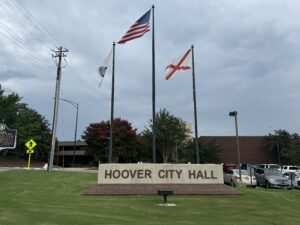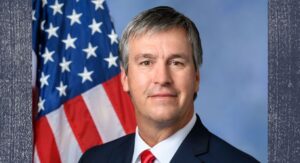John Hendrickson: Is former Vice President Mike Pence’s view on conservatism correct?
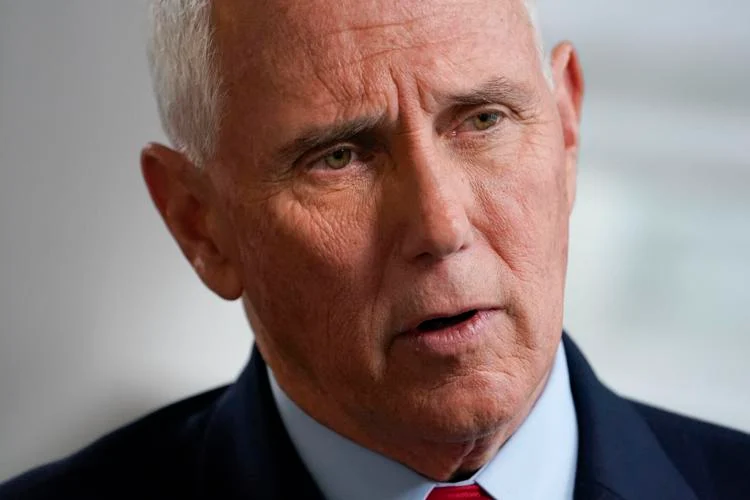
Former Vice President Mike Pence, in a speech before the New Hampshire Institute of Politics at Saint Anselm College and in an article in The Wall Street Journal, warned Republicans and conservatives about the danger of populism. The former Vice President argues, in echoing Ronald Reagan’s 1964 address, that it is “a time for choosing” for Republicans whether to continue to follow the “siren song” of populism or return to true conservatism. It is clear that Pence is not only drawing a line in the sand and forcing a debate over conservatism, but also distancing himself from former President Donald Trump and those who support his policies. Nevertheless, Pence fails to understand that the conservative populism he is denouncing is actually rooted within the American conservative tradition. Debates within and amongst conservatives is nothing new. The conservative movement contains various “schools of intellectual thought” over what conservatism means and how conservatives should shape public policy. Vice President Pence argues that the Republican Party must return to traditional conservatism. “If we are to defeat Joe Biden and turn America around, the GOP must be the party of limited government, free enterprise, fiscal responsibility and traditional values,” wrote Pence. Pence is defining traditional conservatism based upon the principles of limited government, free enterprise, fiscal responsibility, and traditional values. Further, he correctly notes that individual “rights come from God and nature, not from the state.” In addition, Pence argues that just “like our founders, we know the imperfect nature of men and women and that granting them unlimited power imperils liberty.” This is an important pillar of conservatism, that is, that human nature is flawed because of original sin. Pence is also correct in referencing the need for conservatives to uphold and defend constitutional principles such as federalism. Conservatives would largely agree with Pence’s definition of conservatism, but he only offers a surface view of conservatism. Pence warns about the danger of populism, and he argues that this is a political tool of progressives and he references William Jennings Bryan and the “Kingfish” Huey Long as examples. Further, Pence argues that populists within the Republican Party are a threat to limited government, traditional values, and even the Constitution. Further, these Republican populists favor abandoning “American leadership on the world stage” and “embracing a posture of appeasement in the face of rising threats to freedom.” Pence’s other indictment is that Republican populists are abandoning free enterprise. Is Pence correct that populism is not only wrong, but also rooted in liberalism and progressivism and that these Republican populists are not conservative? First, Pence needs to define what policies of the Trump administration were not conservative. Pence acknowledges that the Trump administration governed as conservatives, but now Trump has abandoned conservatism. Does this mean that the Trump America First agenda was conservative according to Pence? In 2016, President Trump campaigned on what was considered to be a new approach to conservatism. He called for restrictions on immigration, building a border wall to secure the border, a restrained foreign policy, and he was highly critical of free trade and openly called for tariffs to protect manufacturing. This agenda has been referred to as America First, conservative nationalism, and conservative populism. It also fits within the framework of the paleoconservative tradition. Nevertheless, the ideas that shaped President Trump were not new, nor were they a departure from conservatism as former Vice President Pence would suggest. In fact, President Trump was rediscovering an older conservative Republican tradition. As an example, Patrick J. Buchanan wrote that “in leading Republicans away from globalism to economic nationalism, Trump is not writing a new gospel. He is leading a lost party away from a modernist heresy – back to the Old-Time Religion.” Buchanan, during the 1990s, campaigned for the Republican nomination championing similar ideas as Trump. The conservative nationalist tradition can be traced back to the American founding. Specifically, Alexander Hamilton and the Federalists. President Calvin Coolidge even credited Hamilton and the Federalists and later the Whigs as the source of the Republican Party’s heritage. Former Vice President Pence should consider the conservatism of the 1920s. Conservatives such as Presidents Warren G. Harding and Calvin Coolidge not only challenged progressives, but their policy agenda was based on conservative nationalism. Harding and Coolidge not only supported a restrained foreign policy, but also protective tariffs and restricting immigration. They also placed an emphasis on limiting government by reducing spending, paying down the national debt, and reducing tax rates. Harding and Coolidge actually reduced government. Vice President Pence appears to be fighting against conservative nationalism and embracing the neoconservative agenda that was embraced by President George W. Bush’s administration. Neoconservatism and the Pence-style of conservatism dominated the Republican Party before Trump. What were the results: a full retreat on the cultural war and traditional values, engaging in costly wars to promote democracy, free trade agreements which led to the devastation of manufacturing, middle-class jobs, and massive trade deficits which led to the rise of China, and uncontrolled immigration. Plus, the federal government, along with the national debt, continued to grow. It was this “traditional” conservatism that idolized and worshiped at the golden alter of democracy and free trade. Is this the conservatism that we want to return to as a nation or a movement? In fact, during the first Republican presidential candidate debate Vice President Pence resembled former President George W. Bush more than President Ronald Reagan, especially in his advocacy of sending more dollars and support to Ukraine. This foreign policy approach, along with free trade, has more in common with progressives such as Presidents Woodrow Wilson and Franklin D. Roosevelt. Pence’s approach to Ukraine is Wilsonian. Pence is attempting to proclaim himself as the true heir to Reagan. When examining the legacy of President Reagan too many conservatives forget that Reagan, even with all of the free market and liberty rhetoric, often practiced a restrained foreign policy and implemented trade policies that were considered protectionist. Some even argued that Reagan was the most
Will Sellers: Saint Hannah and her sinner son
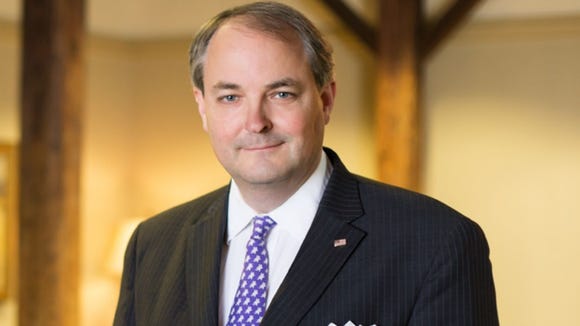
The summer of 1974 in Washington DC was a political bullfight; there was one bull, but a host of matadors, picadors, and spectators galore just waiting to watch President Richard Nixon in his last gasps of political power. Congressional hearings, articles of impeachment, and an administration completely insular and unstable were all coming to a simultaneous head. Secretary of State Henry Kissinger metaphorically described this as the highest pinnacles of success descending into the deepest valleys of distress. Over the course of the prior few years, President Nixon had won the largest landslide election victory to that point in history, successfully concluded American involvement in Vietnam, and achieved the monumental foreign policy objectives of detente with the USSR, stability in the Middle East, and rapprochement with China. But in August 1974, all these achievements were forgotten, and with an atmosphere of political intrigue thick with smiling hatred, the bull in the ring faced the final cut. Almost everyone had deserted him as key members of his staff faced indictment, trials, and prison. The Supreme Court unanimously ruled he had to provide tape-recorded conversations to prosecutors, the House Judiciary Committee passed the first article of impeachment for obstruction of justice, and a group of key legislators informed him that he didn’t have the votes in the Senate to avoid removal from office. Nixon even called Alabama Governor George Wallace to enlist his support, but Wallace refused to intervene on his behalf with members of the Alabama congressional delegation and other Boll Weevil Democrats. After the call with Wallace, Nixon turned to Chief of Staff Alexander Haig and said, “Well, Al, there goes the presidency.” And so the true “man in the arena” faced the final curtain all alone. The day before, on national television, Nixon announced his intention to resign, and now, on the morning of August 9, in an impromptu moment, Nixon addressed the White House staff for the last time as president. In what has been described as rambling, unprepared, and certainly unscripted remarks, Nixon, perhaps for the only time, opened his soul and summed up his life’s work. These off-the-cuff remarks were recorded, and for history’s sake, transcribed for all of see. In the midst of a rambling apology, Nixon reflected on his youth and his parents and then, out of the blue and with no context, said: “Nobody will ever write a book, probably, about my mother. Well, I guess all of you would say this about your mother – my mother was a saint. And, I think of her, two boys dying of tuberculosis, nursing four others in order that she could take care of my older brother for three years in Arizona and seeing each of them die, and when they died, it was like one of her own. Yes, she will have no books written about her. But she was a saint.” An old saying, perhaps, said to comfort women of a different age and justify their sacrifices states: “The hand that rocks the cradle, rules the world.” So, Nixon’s mother, Hannah Milhous, at least for five-and-a-half years, ruled the world. No book has ever been written about her, but the life of Hannah Nixon and the impact she had on her son and his consequential role in American politics and international affairs is worth consideration. Hannah Milhous was born in 1885 in Butlerville, Indiana, into a devout Quaker family of farmers. She was one of nine children; seven girls and two boys. Her father, Franklin, was an orchardist, who, seeing brighter days ahead, moved his entire family to California in 1897 to establish a tree nursery and orange grove with other Quakers in Whittier, California. While a “birthright” Quaker, Hannah’s branch of the faith expressed itself in a more evangelical bent, and at the age of 18, she had a religious experience that made her very devout and committed. Hannah was intelligent, and after completing high school, she attended Whittier College, where, by all accounts, she made good grades and was on the path to becoming a teacher. No stranger to hard work, she helped her mother with various household tasks, assisted with her father’s farm, and stayed up late each night studying. Her life would be forever changed when, at a Quaker Valentine’s Day party, she met Frank Nixon. They feel in love and married four months later. Hannah’s family never really approved of Frank and thought she had married beneath her. The fact that she married before finishing college was also a sore spot with Hannah’s family, who never seemed to warm up to Frank. But Hannah truly loved her husband, and, having completed her sophomore year of college, seemed ready to start her own family. Within a year of their marriage, Harold Nixon was born, followed by Richard in 1913. She had five sons in all, named after the early English kings; Richard, for the Richard the Lion-Hearted. By all accounts, Frank was uncouth, argumentative, and a tough father. Upon his marriage to Hannah, he converted to the Quaker faith but never truly left his Methodist roots. Hannah was the complete opposite – quiet and inclined to see both sides of an issue. She was also compassionate, and one area of disagreement with Frank was Hannah’s willingness to help the destitute. Frank wanted someone to work before receiving assistance, but Hannah would never turn away a tramp from the door and ran the household like a charitable operation. Even when the family had enough money to employ a “hired girl,” Hannah insisted that the servant eat with them at the table. Hannah was religious and committed to her faith, but she was also had a deep sense of privacy and was not a show-off when it came to piety. At night, she went into her closet to say her prayers. As was true of most Quakers, neither she nor Frank smoked, drank, or cursed, and she expected that her children would accept these same restraints. Hannah’s influence was so
John Hendrickson and Vance Ginn: Learning from the champions of fiscal conservatism
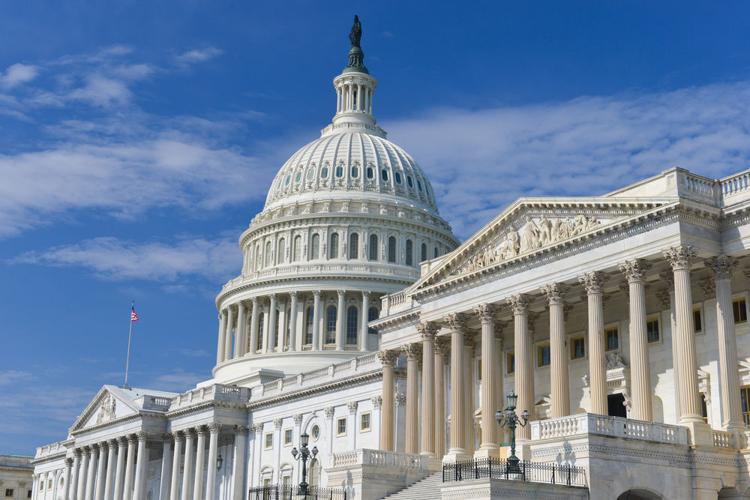
Government spending is at the heart of sound public policy. But out-of-control spending for decades has created substantial economic destruction and ongoing threats that must be remedied before things get worse. Fortunately, we have examples of how fiscal rules can solve this problem. We must put these rules into place before our economy gets any worse. Excessive federal government spending has created mounting budget deficits that have driven the national debt to $30 trillion. This debt has given the Federal Reserve the ammunition to use to recklessly print money, resulting in the highest inflation in 40 years. And inflation destroys our purchasing power as it is a hidden tax that erodes our livelihoods. Controlling spending takes discipline, and applying fiscal rules can help. Policymakers should follow the examples of a century ago in Presidents Warren G. Harding and Calvin Coolidge, who demonstrated that controlling spending and cutting the debt is possible. President Harding assumed office in 1921 when the nation was suffering an overlooked severe economic depression. Hampering growth were high-income tax rates and a large national debt after World War I. Congress passed the Budget and Accounting Act of 1921 to reform the budget process, which also created the Bureau of the Budget (BOB) at the U.S. Treasury Department (which was changed in 1970 to the Office of Management and Budget in the Executive Office of the President). President Harding’s chief economic policy was to rein in spending, reduce tax rates, and pay down debt. Harding, and later Coolidge, understood that any meaningful cuts in taxes and debt couldn’t happen without reducing spending. Charles G. Dawes was selected by Harding to serve as the first BOB Director. Dawes shared the Harding and Coolidge view of “economy in government.” In fulfilling Harding’s goal of reducing expenditures, Dawes understood the difficulty in cutting government spending as he described the task as similar to “having a toothpick with which to tunnel Pike’s Peak.” To meet the objectives of spending relief, the Harding administration held a series of meetings under the Business Organization of the Government (BOG) to make its objectives known. “The present administration is committed to a period of economy in government…There is not a menace in the world today like that of growing public indebtedness and mounting public expenditures…We want to reverse things,” explained Harding. Not only was Harding successful in this first endeavor to reduce government expenditures, his efforts resulted in “over $1.5 billion less than actual expenditures for the year 1921.” Dawes stated: “One cannot successfully preach economy without practicing it. Of the appropriation of $225,000, we spent only $120,313.54 in the year’s work. We took our own medicine.” Overall, Harding achieved a significant reduction in spending. “Federal spending was cut from $6.3 billion in 1920 to $5 billion in 1921 and $3.2 billion in 1922,” noted Jim Powell, a senior fellow at CATO Institute. Harding and the Republican Party viewed a balanced budget as not only good for the economy, but also as a moral virtue. Dawes’s successor was Herbert M. Lord, and just as with the Harding Administration, the BOG meetings were still held on a regular basis. President Coolidge and Director Lord met regularly to ensure their goal of cutting spending was achieved. Coolidge emphasized the need to continue reducing expenditures and tax rates. He regarded “a good budget as among the most noblest monuments of virtue.” Coolidge noted that a purpose of government was “securing greater efficiency in government by the application of the principles of the constructive economy, in order that there may be a reduction of the burden of taxation now borne by the American people. The object sought is not merely a cutting down of public expenditures. That is only the means. Tax reduction is the end.” “Government extravagance is not only contrary to the whole teaching of our Constitution, but violates the fundamental conceptions and the very genius of American institutions,” stated Coolidge. When Coolidge assumed office after the death of Harding in August 1923, the federal budget was $3.14 billion and by 1928 when he left, the budget was $2.96 billion. Altogether, spending and taxes were cut in about half during the 1920s, leading to budget surpluses throughout the decade that helped cut the national debt. The decade had started in depression and by 1923, the national economy was booming with low unemployment. If this conservative budgeting approach – which was tied with sound monetary policy for most of the period – had been continued, the Great Depression may not have happened. Officials at every level of government today should learn from this extraordinary lesson that fiscal restraint supports more economic activity as more money stays in the productive private sector. With spending out of control at the federal level, and in many states and local governments, the time is now for spending restraint and strong fiscal rules to set the stage for more economic prosperity today and for generations to come. John Hendrickson is the Policy Director at Iowans for Tax Relief Foundation. Vance Ginn, Ph.D., is chief economist at the Texas Public Policy Foundation, and is the former associate director for economic policy at the White House’s Office of Management and Budget, 2019-20. Republished with the permission of The Center Square.

